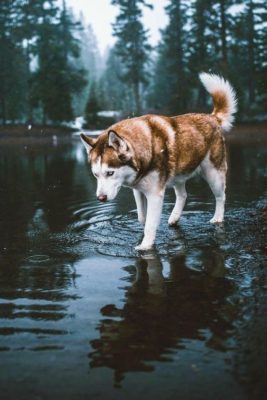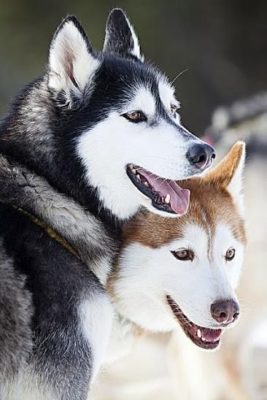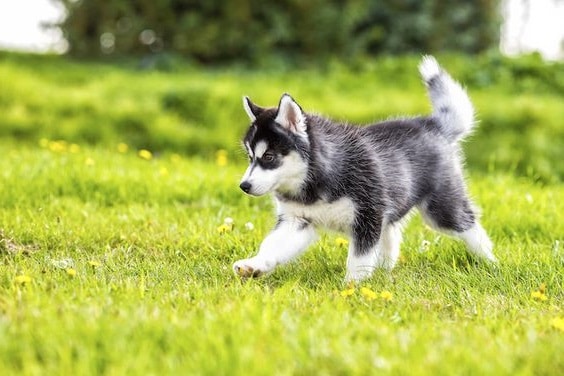Siberian Husky
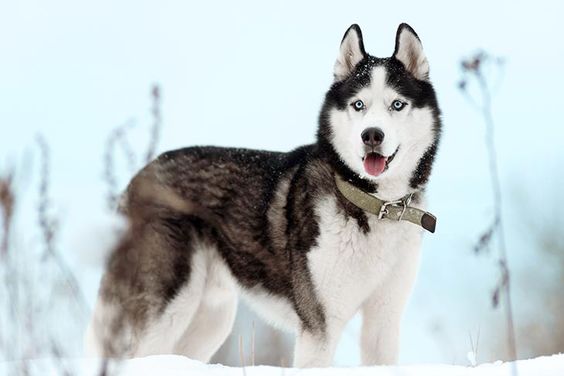
To this day, the Siberian Husky has retained its highly original character, which clearly distinguishes it from the typical family and domestic dogs. He is still a great animal that needs work and company. He establishes a close bond with his owner only if he offers him the necessary attention. He proves to be a very charitable, proactive, and affectionate dog when kept according to his species affiliation.
Table of Contents
Breed Information
| Another Name | Chukcha |
| Origin | Siberia |
| Height | Males 53-60 cm Females 51-56 cm |
| Weight | Males 20-27 kg Females 16-23 kg |
| Fur | Medium length |
| Color | White, black, gray or gray with white, black with reddish tan |
| Lifespan | 12-15 years |
| FCI Classification | Spitz and primitive types |
| Group | Watchdogs, dogs for children, sled dogs |
| Price | $500-1000 |
Breed Photos
Origin History
The Northern Husky ancestors were initially bred in northeast Asia by the Chukchi and were kept as house dogs for their families and as endurance sled dogs.
As the name suggests, the Siberian Husky comes from Siberia, where it was used as a working animal about 2,000 years ago. Due to the isolation of nomadic tribes that used the Siberian Husky, breeding of the breed remained pure for a long time. By the early 20th century, a Russian trader discovered adoptable dogs and brought them to Alaska. Sled dog racing was popular here, so the newcomers from Siberia soon became very popular. Despite excellent character traits and centuries of pure breeding, the breed was not recognized until 1930 in the United States and 1966 in Europe.
Racers still keep packs of Siberians on sleds for fun and sport throughout North America. Less adventurous devotees of the breed enjoy the company of this sociable and gentle companion.
Appearance
The Siberian Husky has a compact body with a thick coat, indicating its Nordic ancestry. He has a smooth, seemingly effortless gait, and the balanced body proportions of this remarkable breed reflect strength, endurance, and speed.
Siberian Huskies have almond-shaped, slightly slanting eyes. They can be blue, brown, or mixed colors. The facial expression is shrewd but friendly. The triangular ears are medium-sized, set high, and close together. They stand perfectly straight and have good pubescence.
Siberian Huskies have a medium-length double coat that looks like fur but does not hide body lines. Colors range from black to pure white, with a variety of head patterns and sometimes unusual patterns.
Character
To this day, the Siberian Husky has retained its highly original character, which clearly distinguishes it from the typical family and domestic dogs. He is still a great animal that needs work and company. He establishes a close bond with his owner only if he offers him the necessary attention. He proves to be a very charitable, proactive, and affectionate dog when kept according to his species affiliation.
The Siberian Husky has an exceptionally strong desire to move and wants to run a lot every day. Unbridled drive and independence make life difficult for the Siberian Husky. It is also worth constantly monitoring his innate hunting instinct. If he is runaway-proof and agile enough, the Siberian Husky will remain a laid-back and loving dog that gets along well with strangers and adapts to any new situation without problems.
Care
Siberian Huskies are considered a “natural” breed. They are remarkably self-cleaning and often only need a few baths a year unless they exhibit in dog shows. Weekly grooming helps keep the Siberian Husky’s coat, skin, and teeth in good condition. Siberians have a double coat, an undercoat, and a hair coat. The undercoat is removed twice a year, and it is important to constantly comb out the old hair with a brush and metal comb. Please pay special attention to the nails’ length and keep them trimmed, so there are no problems with the feet.
Training
Siberian Huskies are active, athletic dogs that need a lot of exercises. They are a working breed, and they are happy when they have some function. Regular exercise is important both physically and mentally, and exercising together strengthens the bond between dog and owner. Siberians were raised to run, and they will do so at every opportunity. It is very important to keep your dog on a leash, harnessed, or in a fenced yard at all times. A few activities that dogs and owners can enjoy are rally, agility, and obedience. This breed is also very adaptable, and for those who live in more urban environments, daily walks or games with the dogs can be great exercise.
Common Diseases
Siberian Huskies are sturdy dogs with virtually no predisposition to the disease. With a dog that has an efficient musculoskeletal system and good physical condition, it is important not to overexert him, despite his temperament and especially during the growth phase. When buying from a breeder, make sure that the ancestors of the four-legged friend you want to breed with do not have hip dysplasia and have been examined. Siberian Huskies are prone to zinc-reactive dermatoses. The gut does not absorb enough zinc from normal food, which leads to skin problems in particular. In this case, a lifetime dose of zinc is needed after consultation with a veterinarian.
Nutrition
As already mentioned, Siberian Huskies are very athletic and active, so they need to be fed accordingly. Active dogs have a higher energy requirement than other dogs. In addition to the level of activity, other factors affect a dog’s nutrition. For example, age, health, and size play an important role and should not be ignored. As a rule, the food should consist of about 70% meat, 20 to 30% fruits and vegetables, and a small percentage of grains. Four-legged friends are fed mostly raw meat. One advantage is that the food components can be adapted to the nutritional needs of the dog. Also, remember always to offer your beloved pet plenty of freshwater.
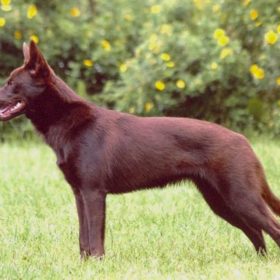 Australian Kelpie
Australian Kelpie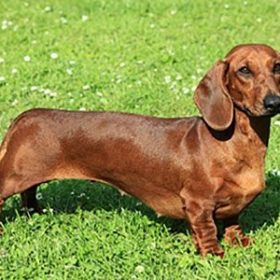 Dachshund
Dachshund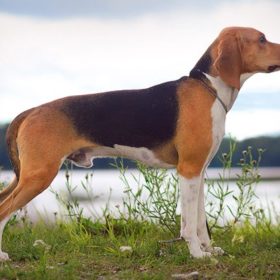 Estonian Hound
Estonian Hound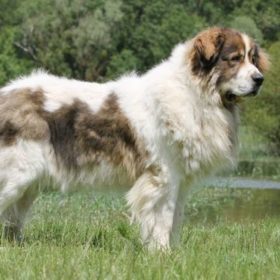 Pyrenean Mastiff
Pyrenean Mastiff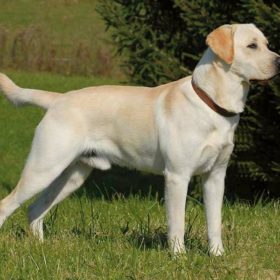 Labrador Retriever
Labrador Retriever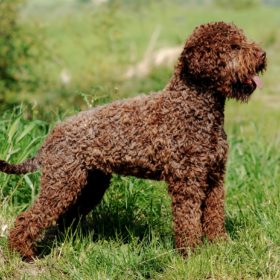 Lagotto Romagnolo
Lagotto Romagnolo